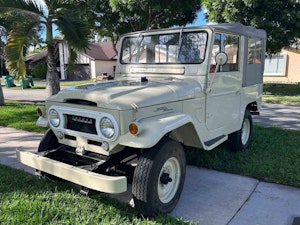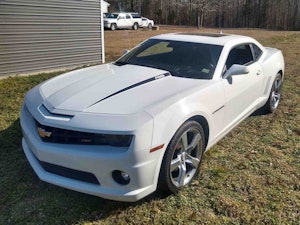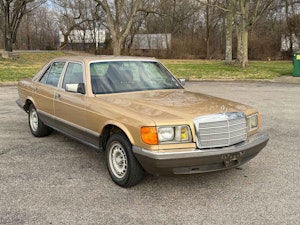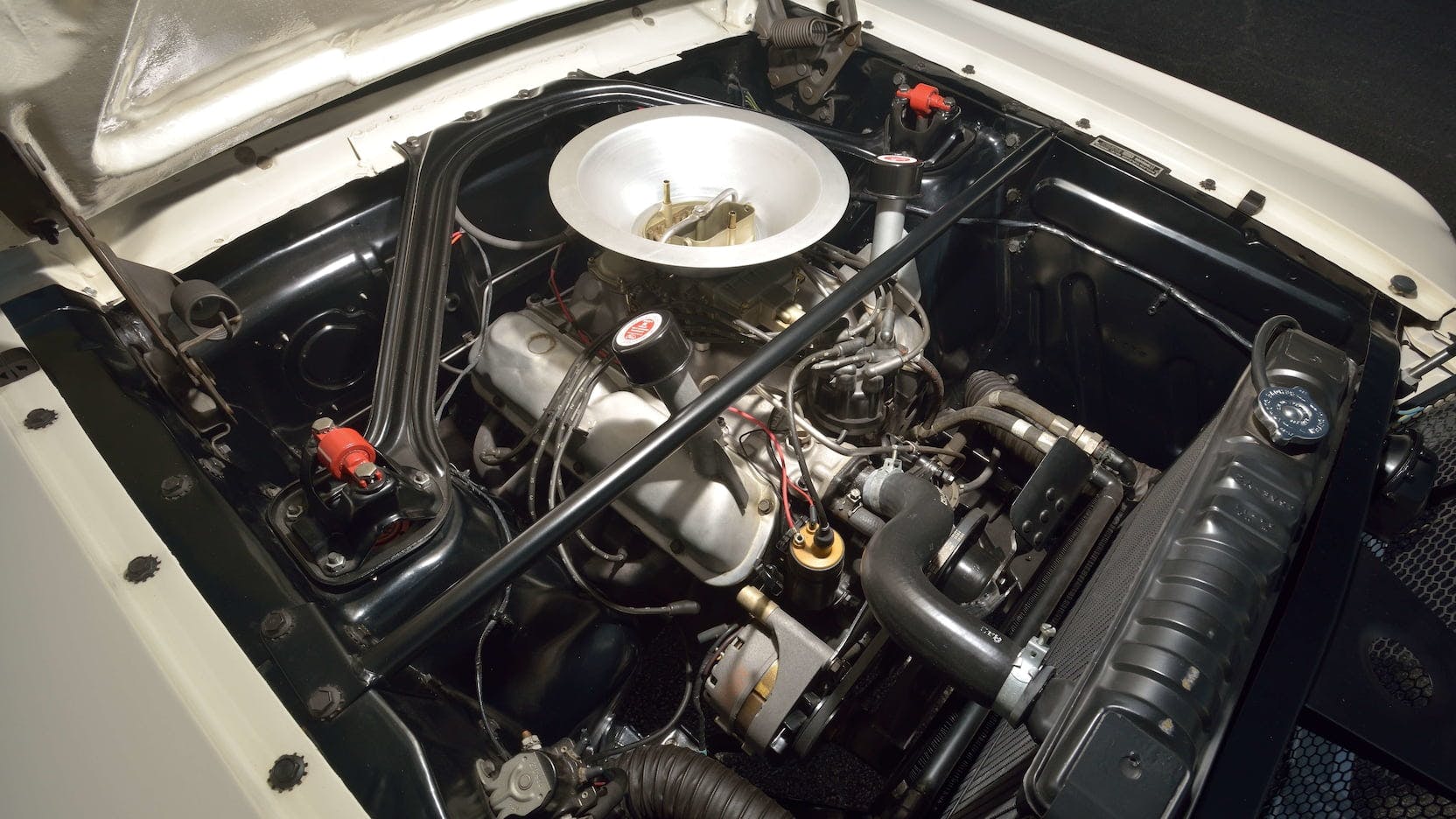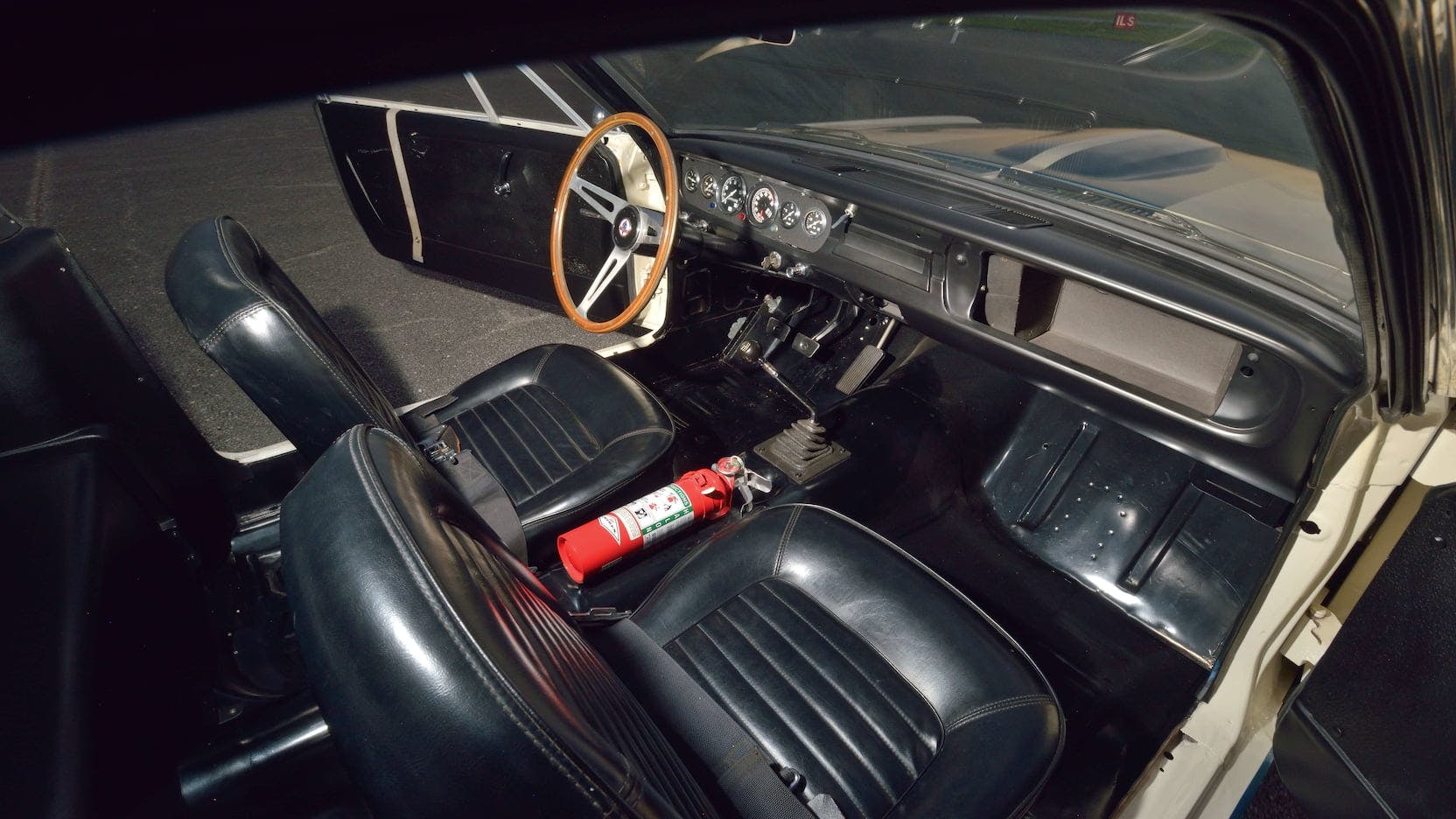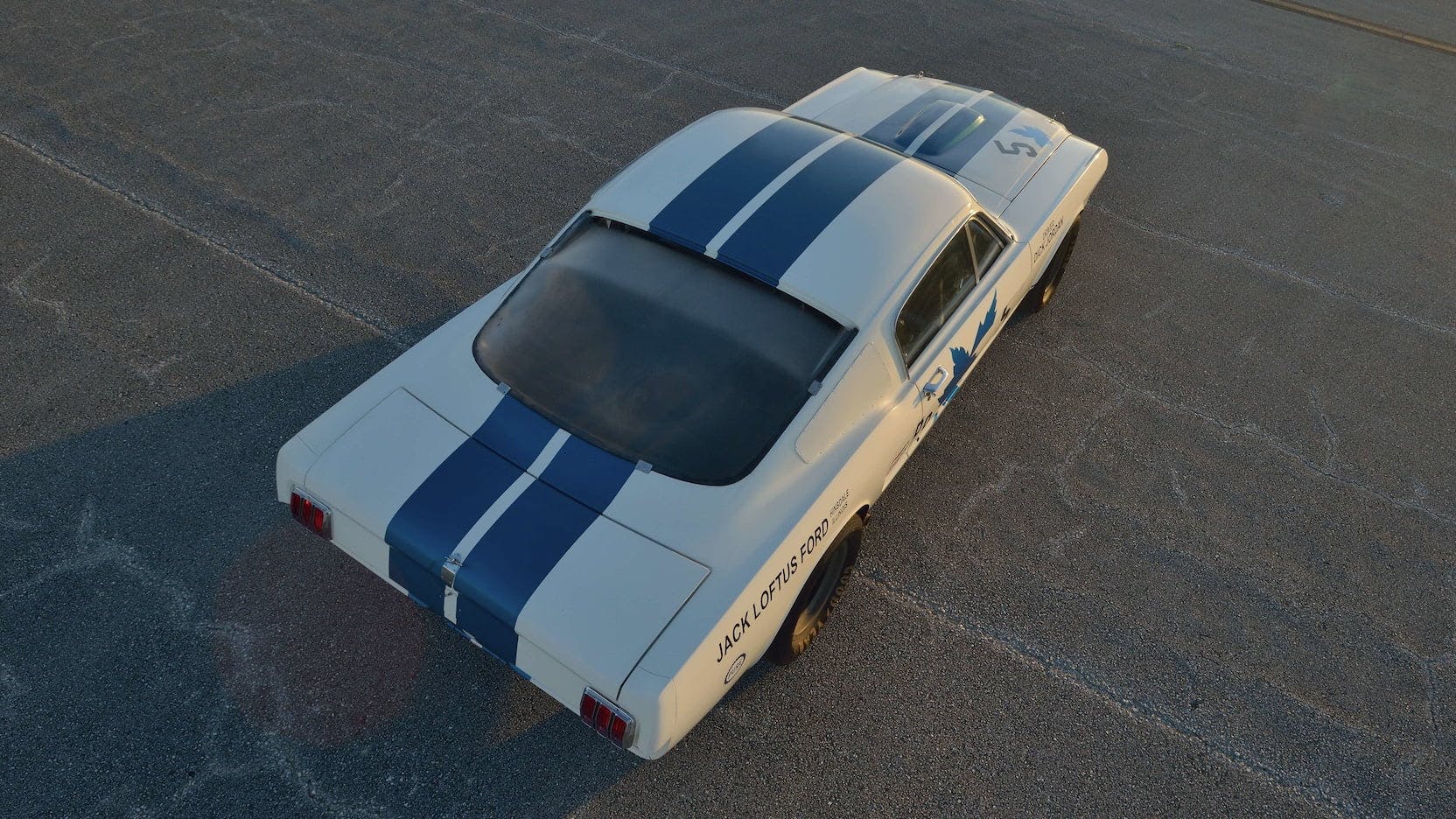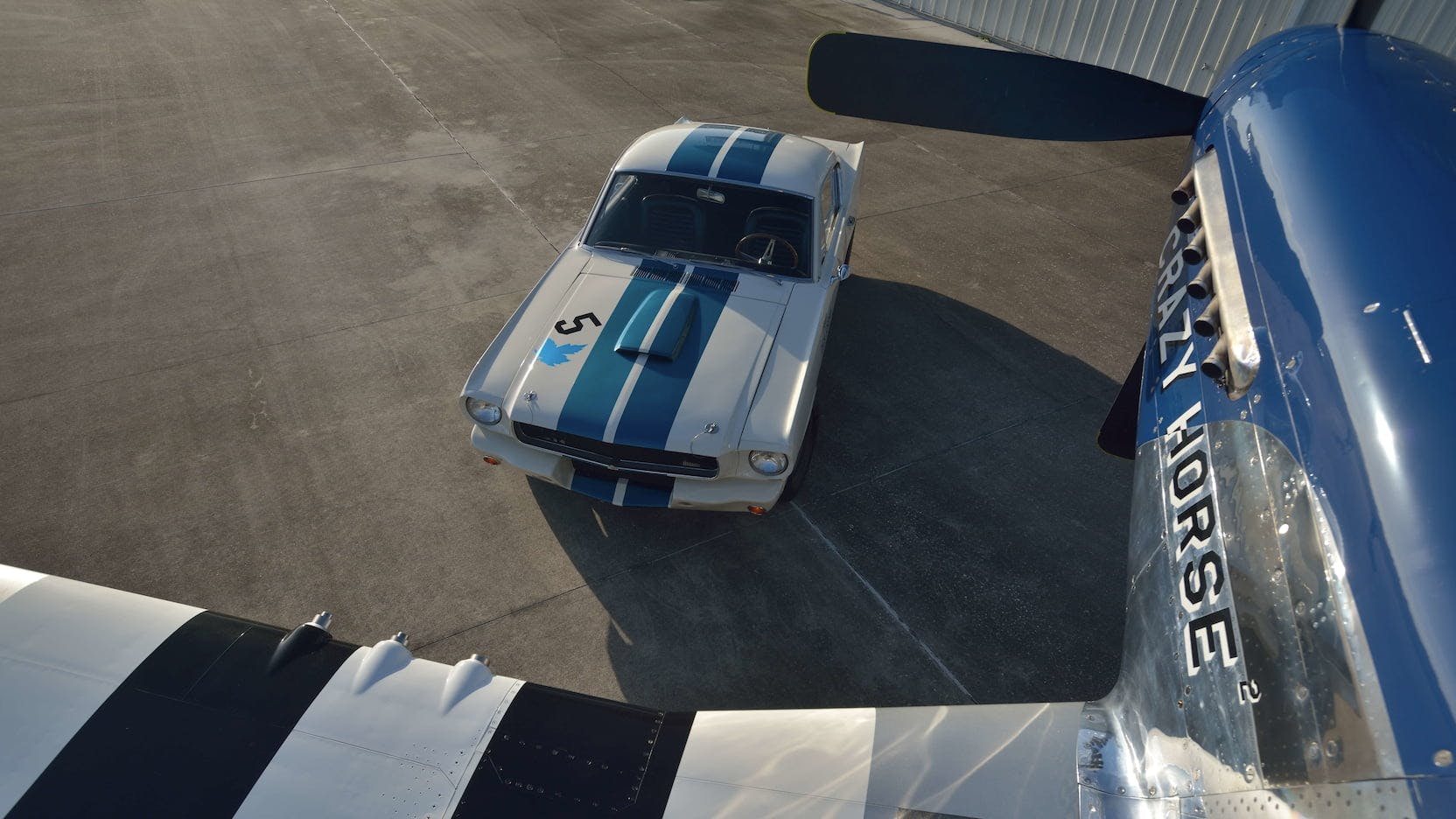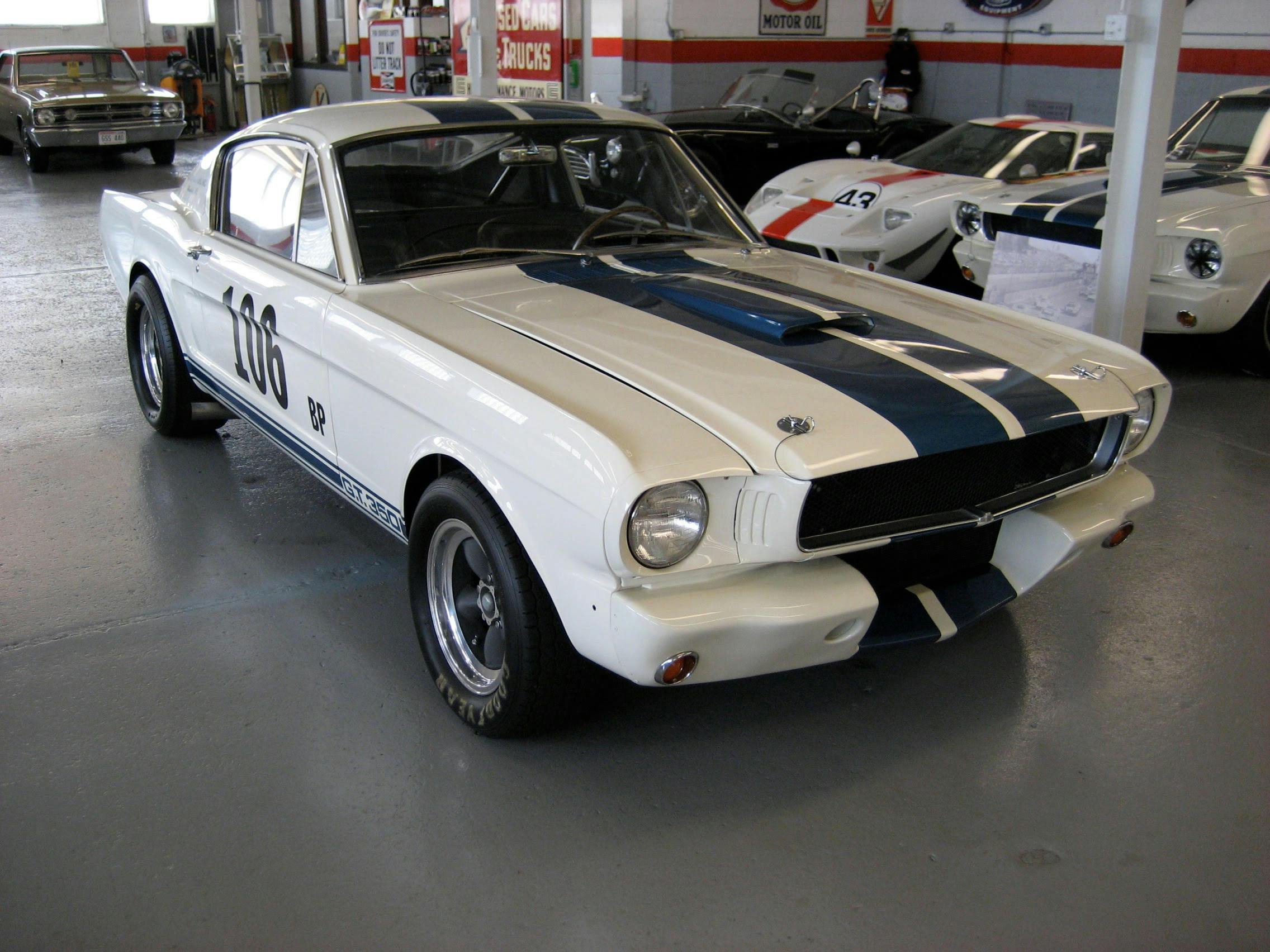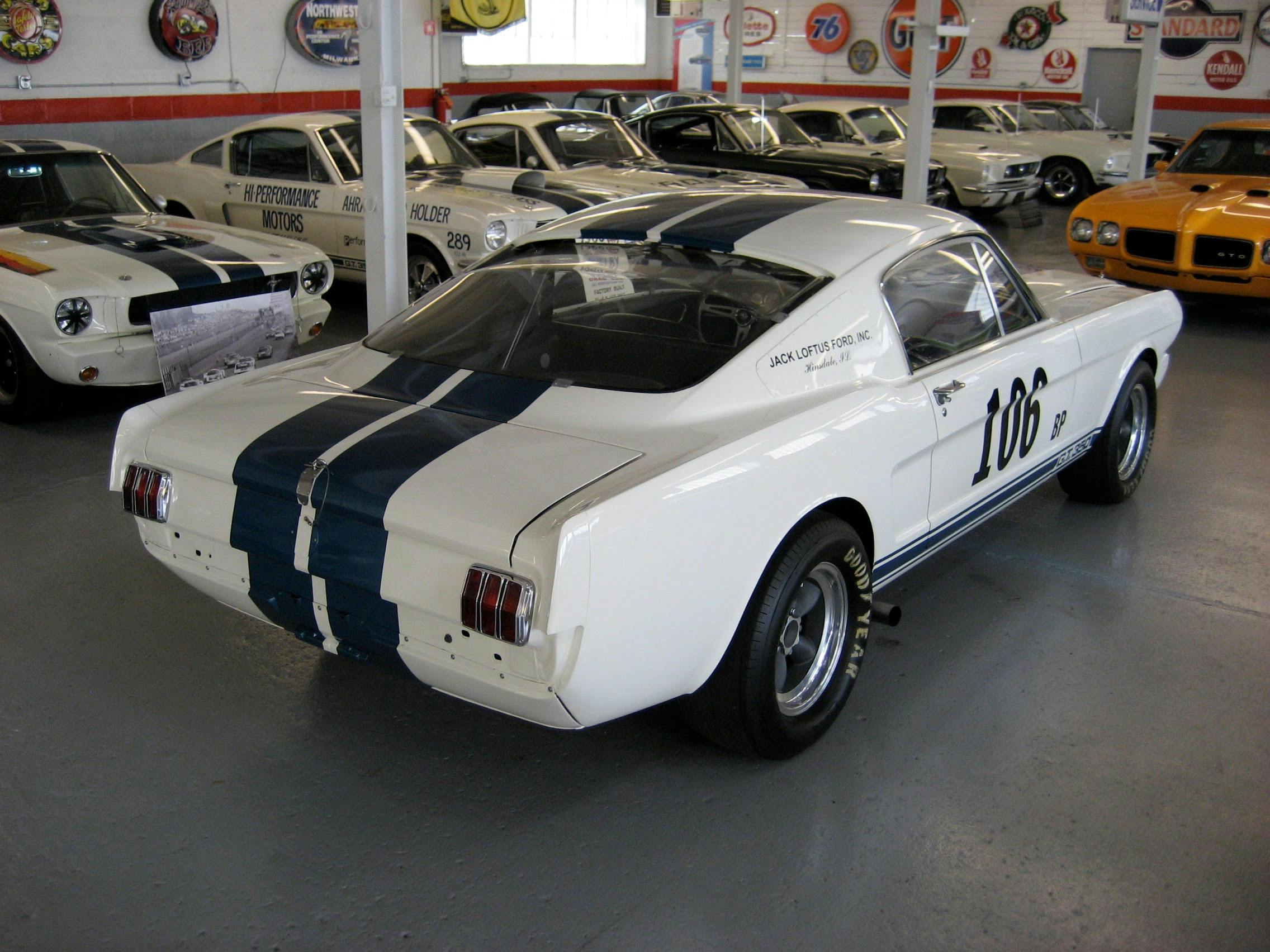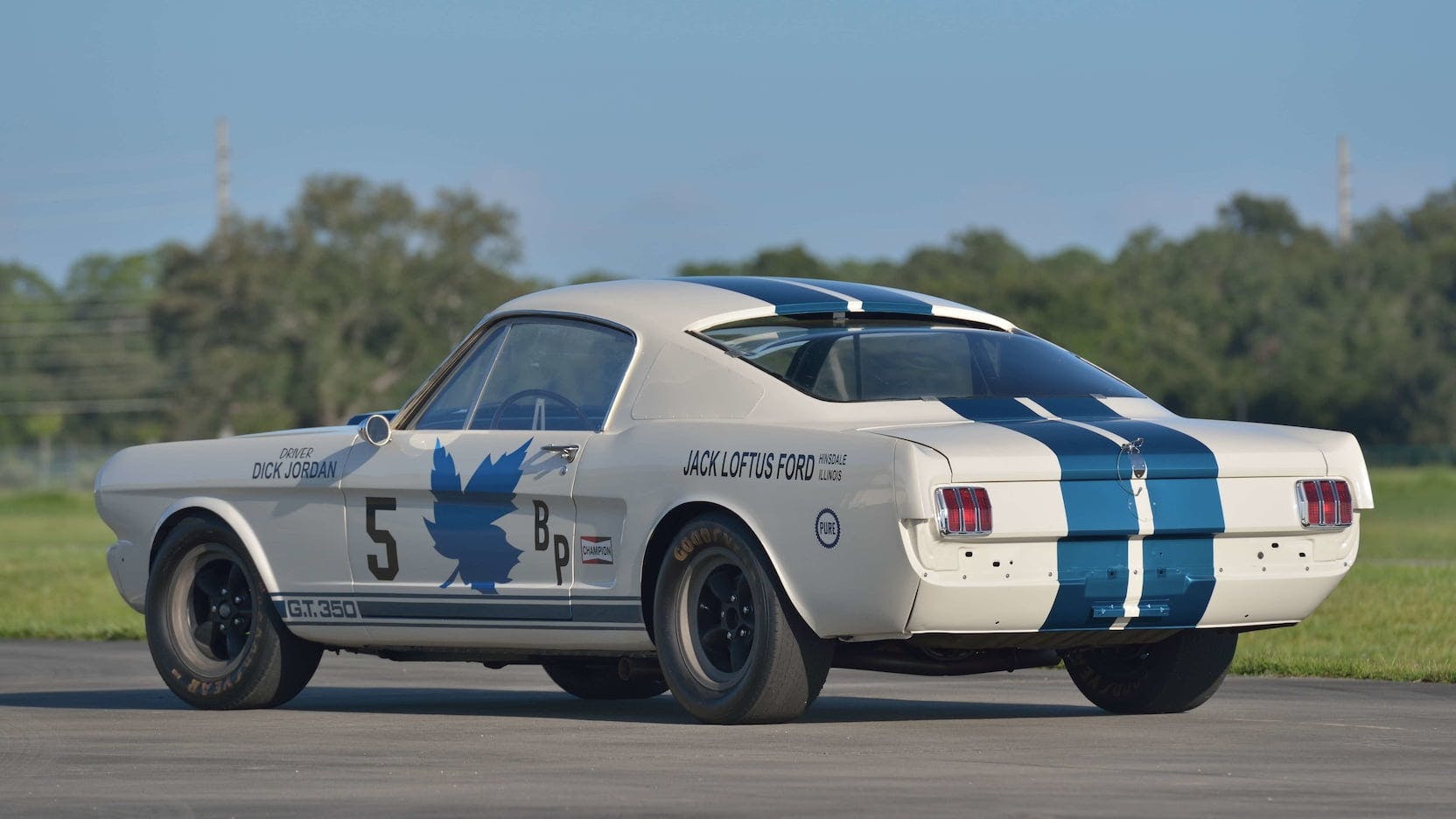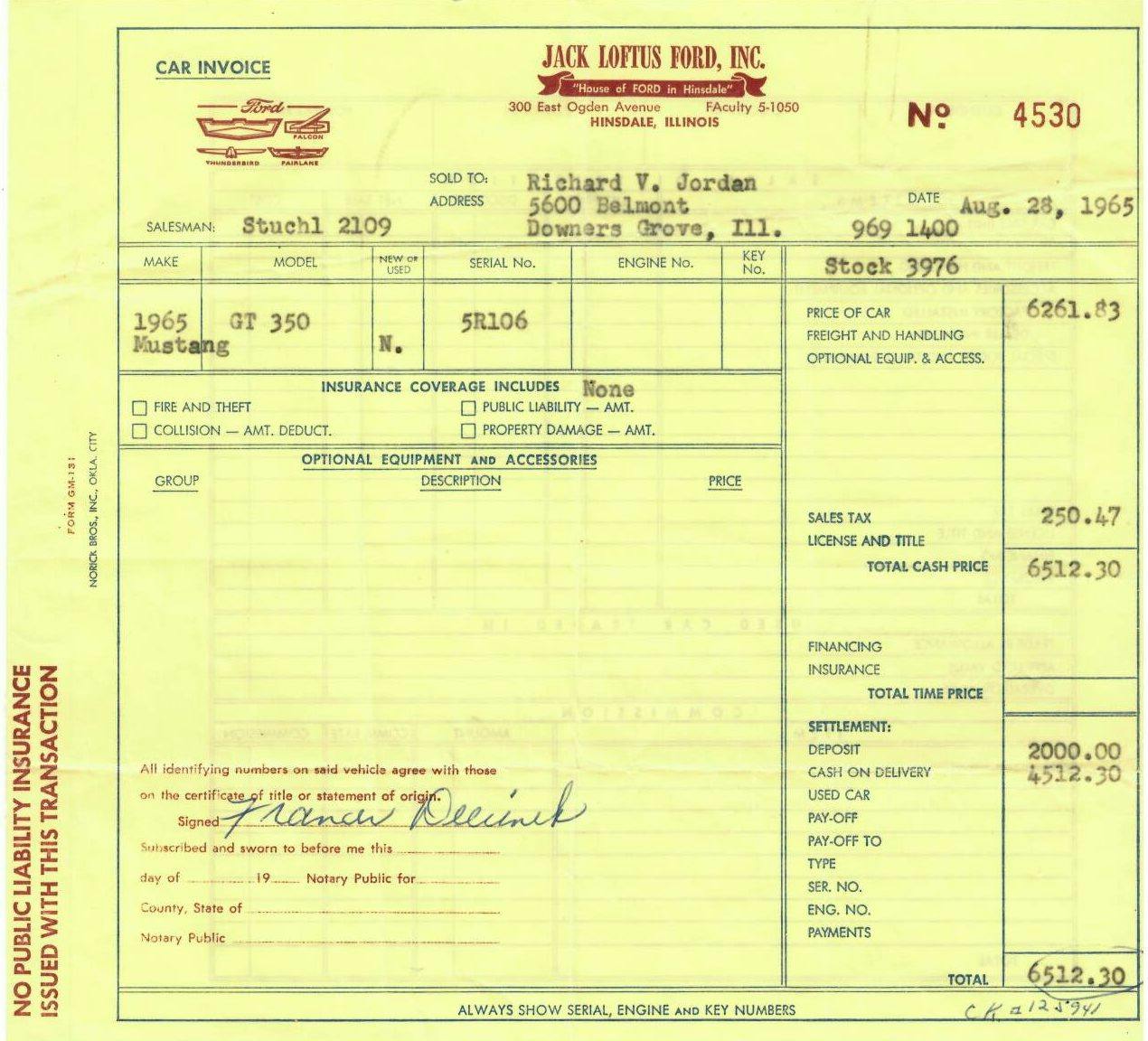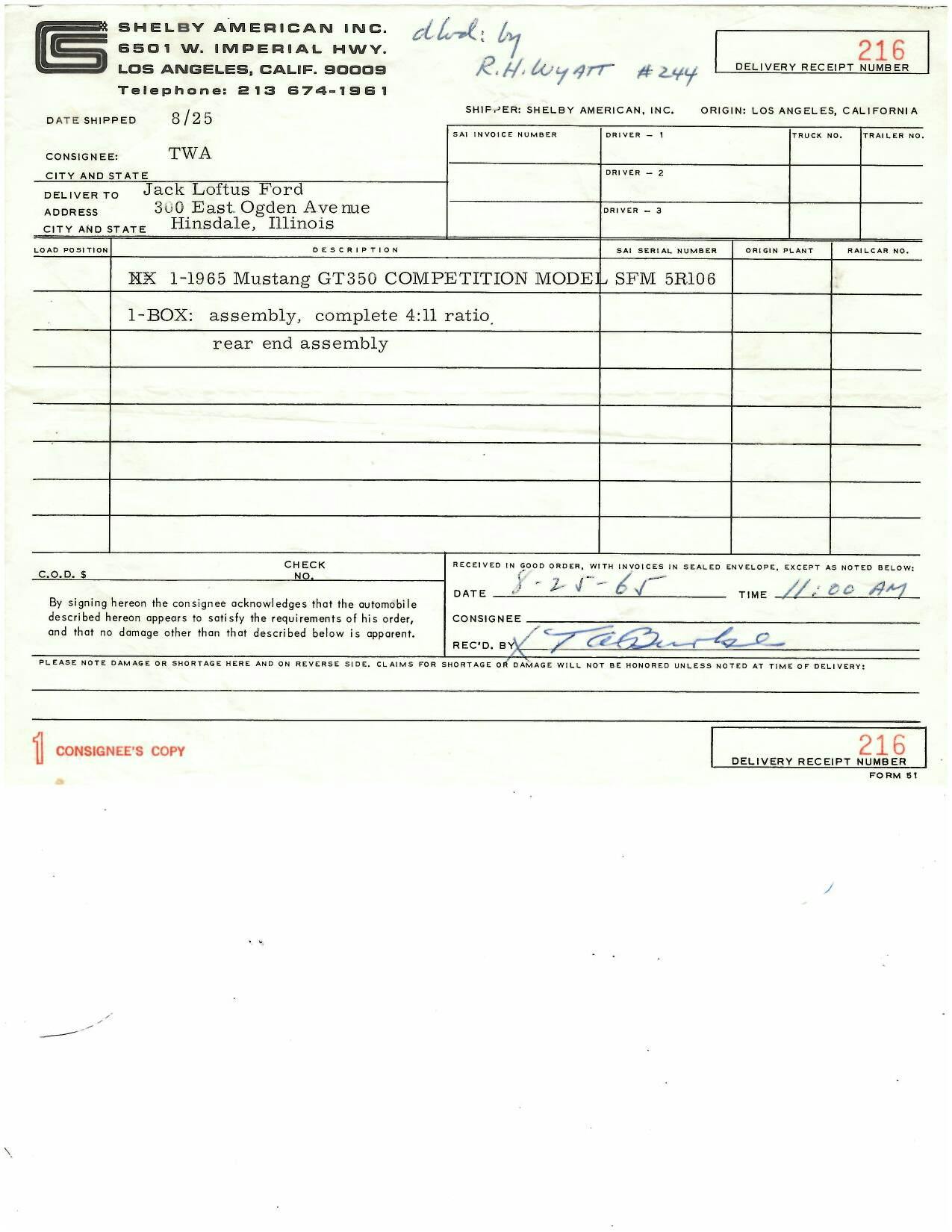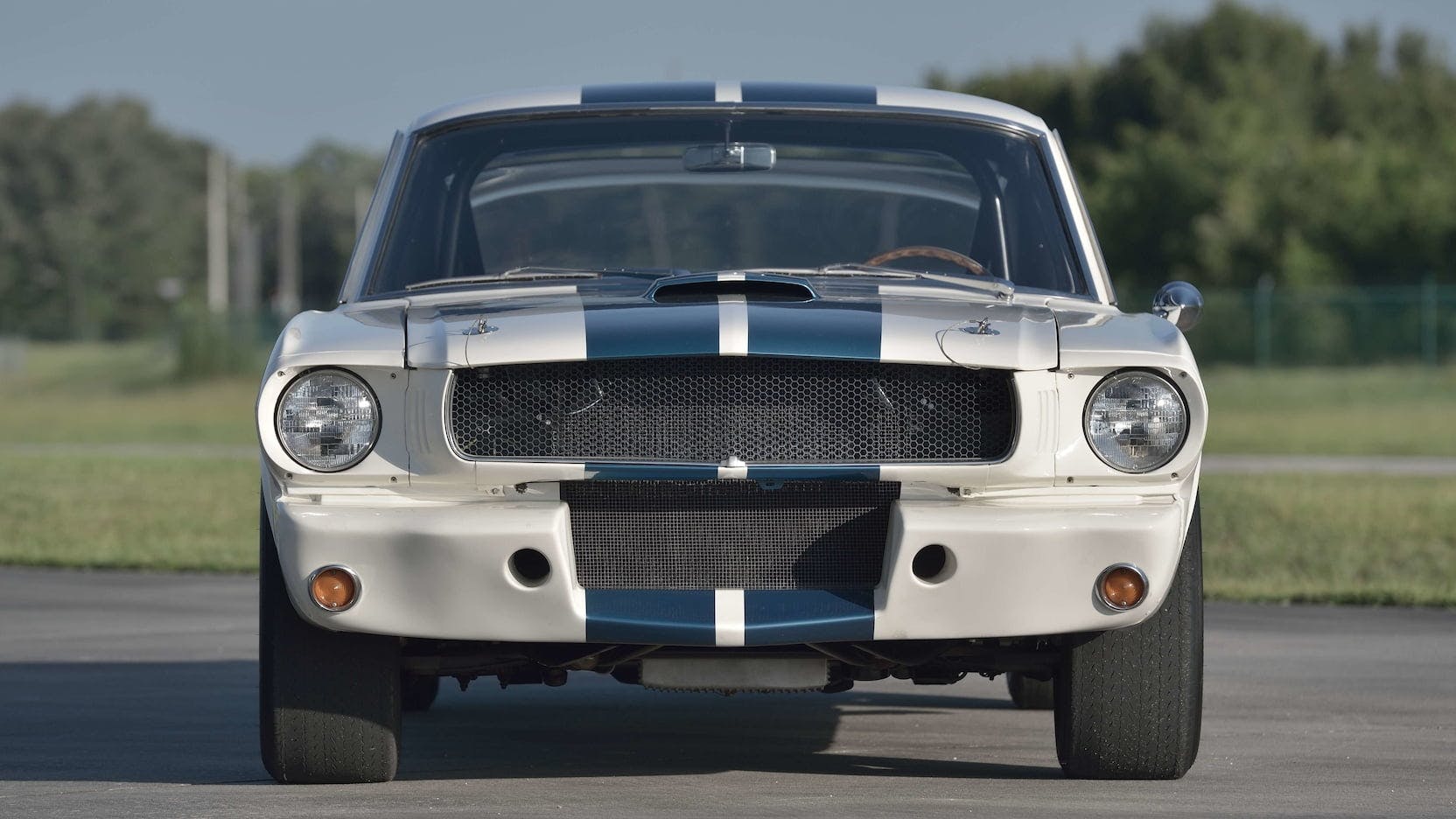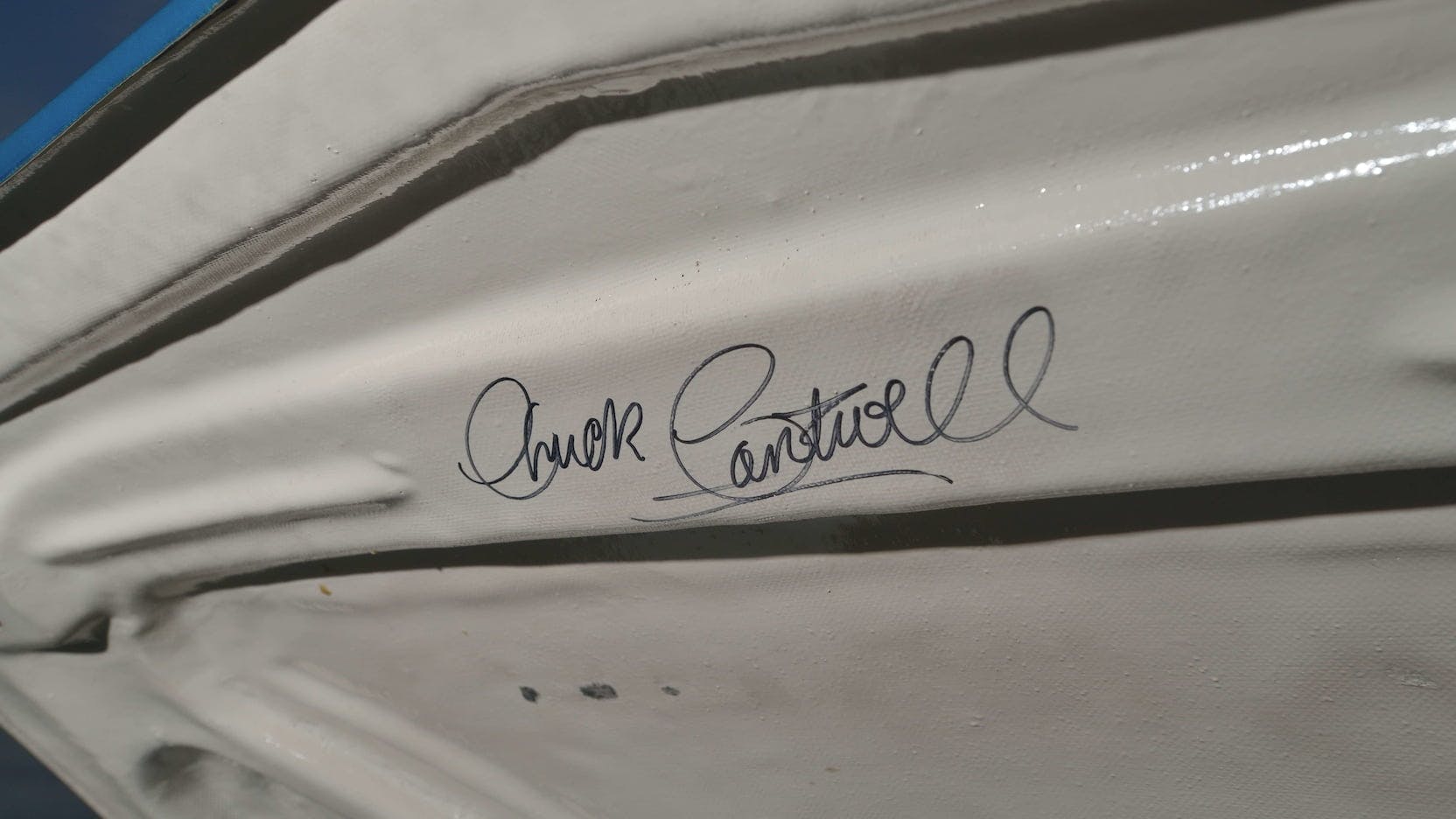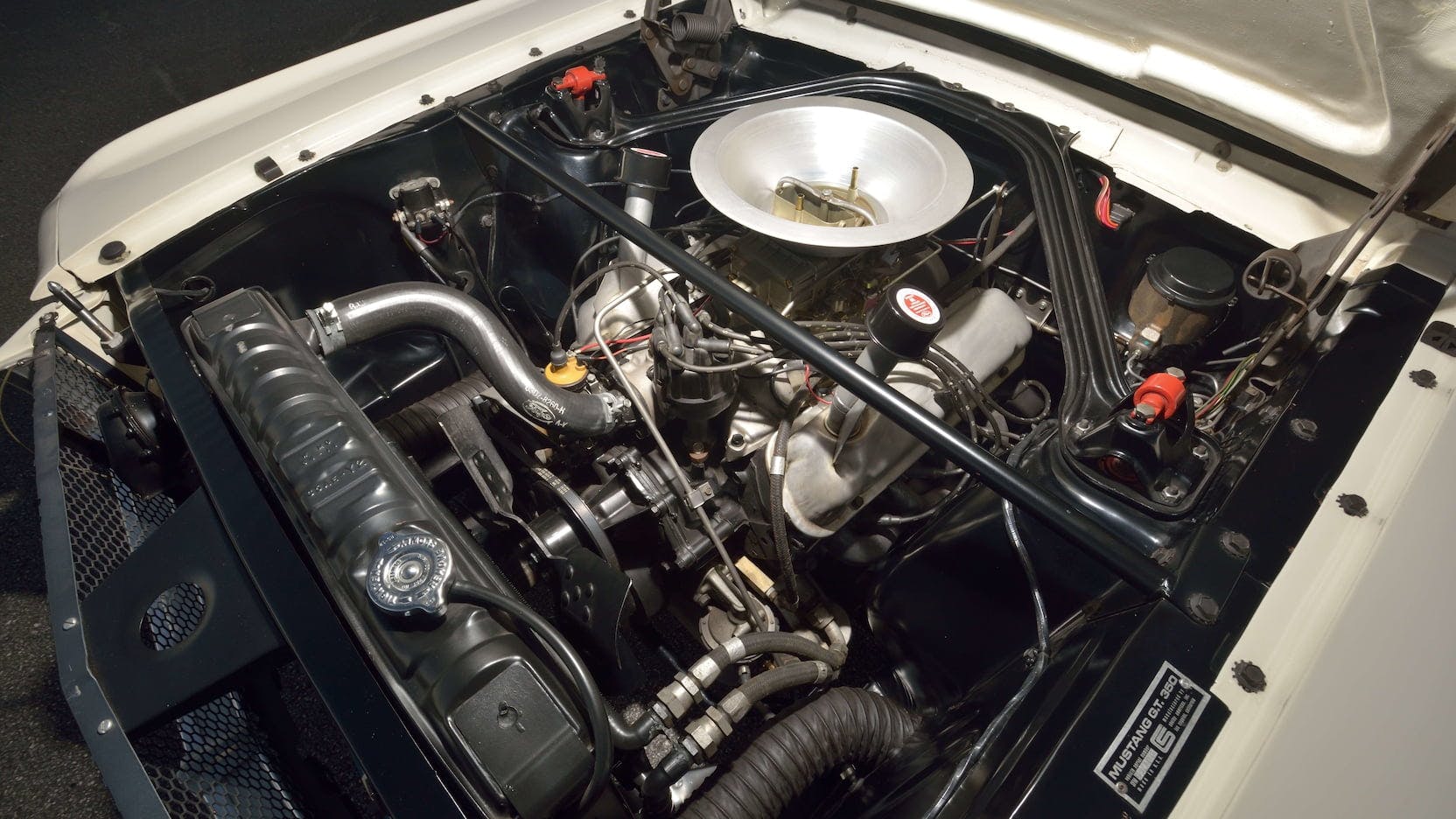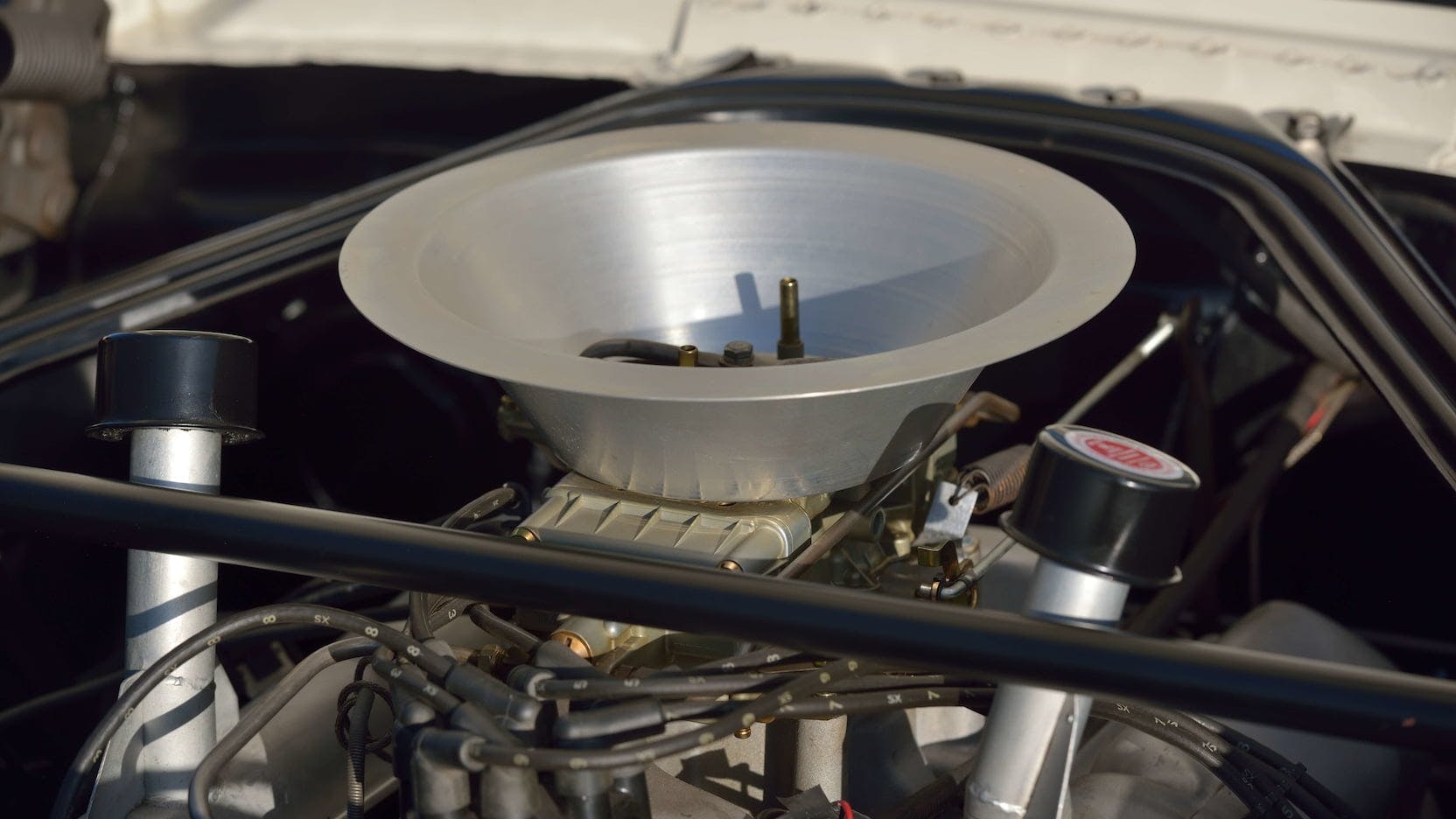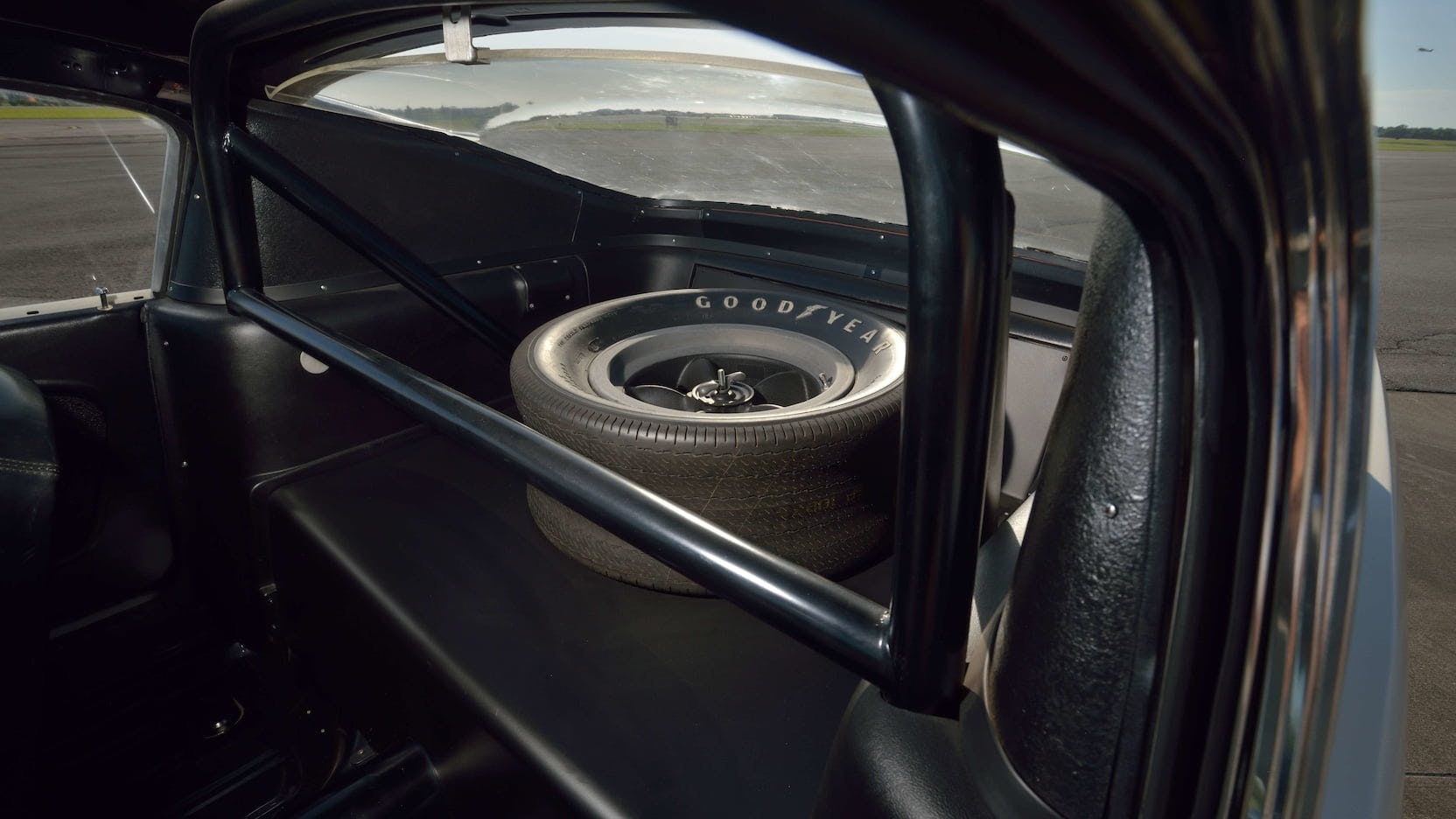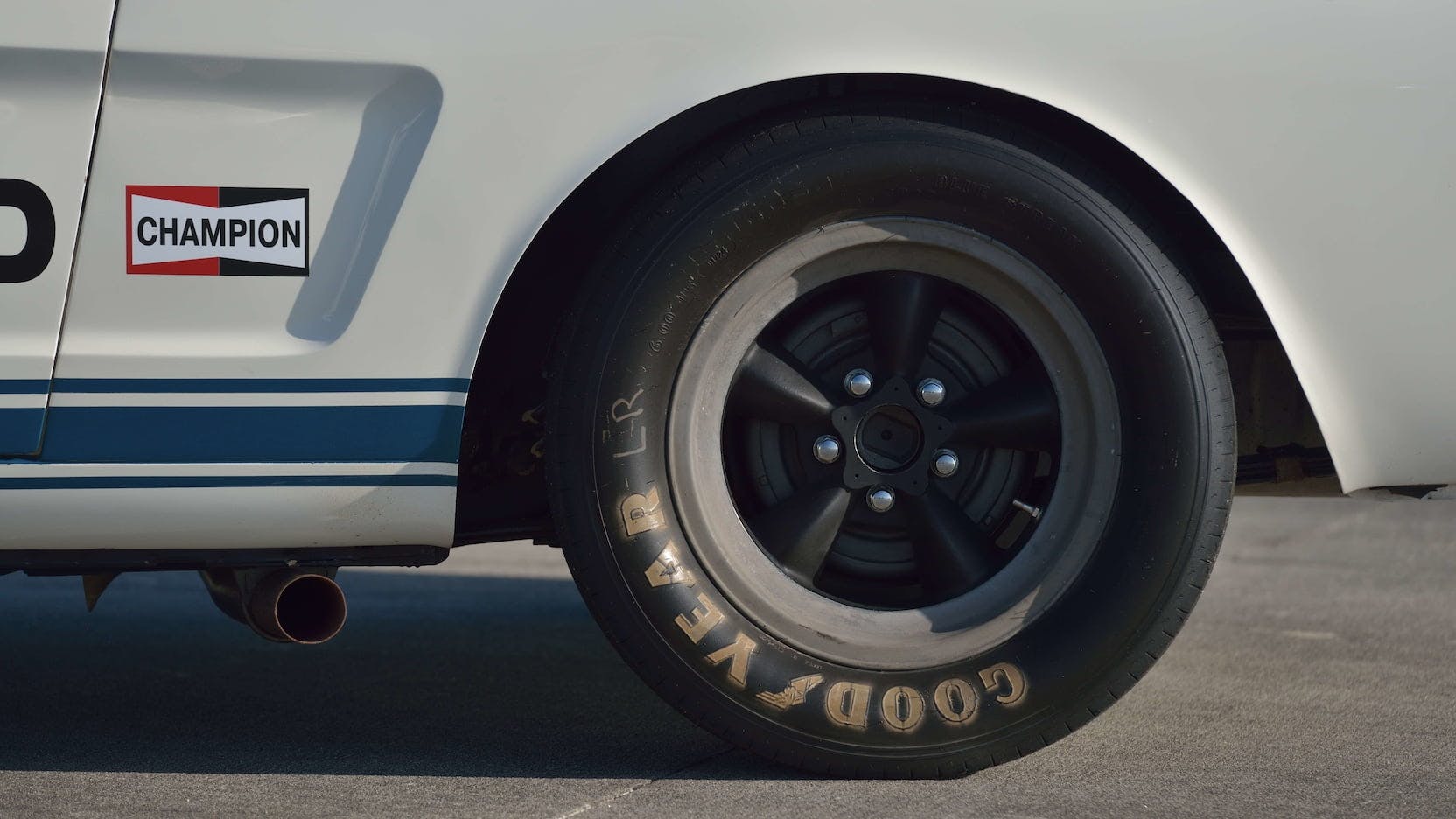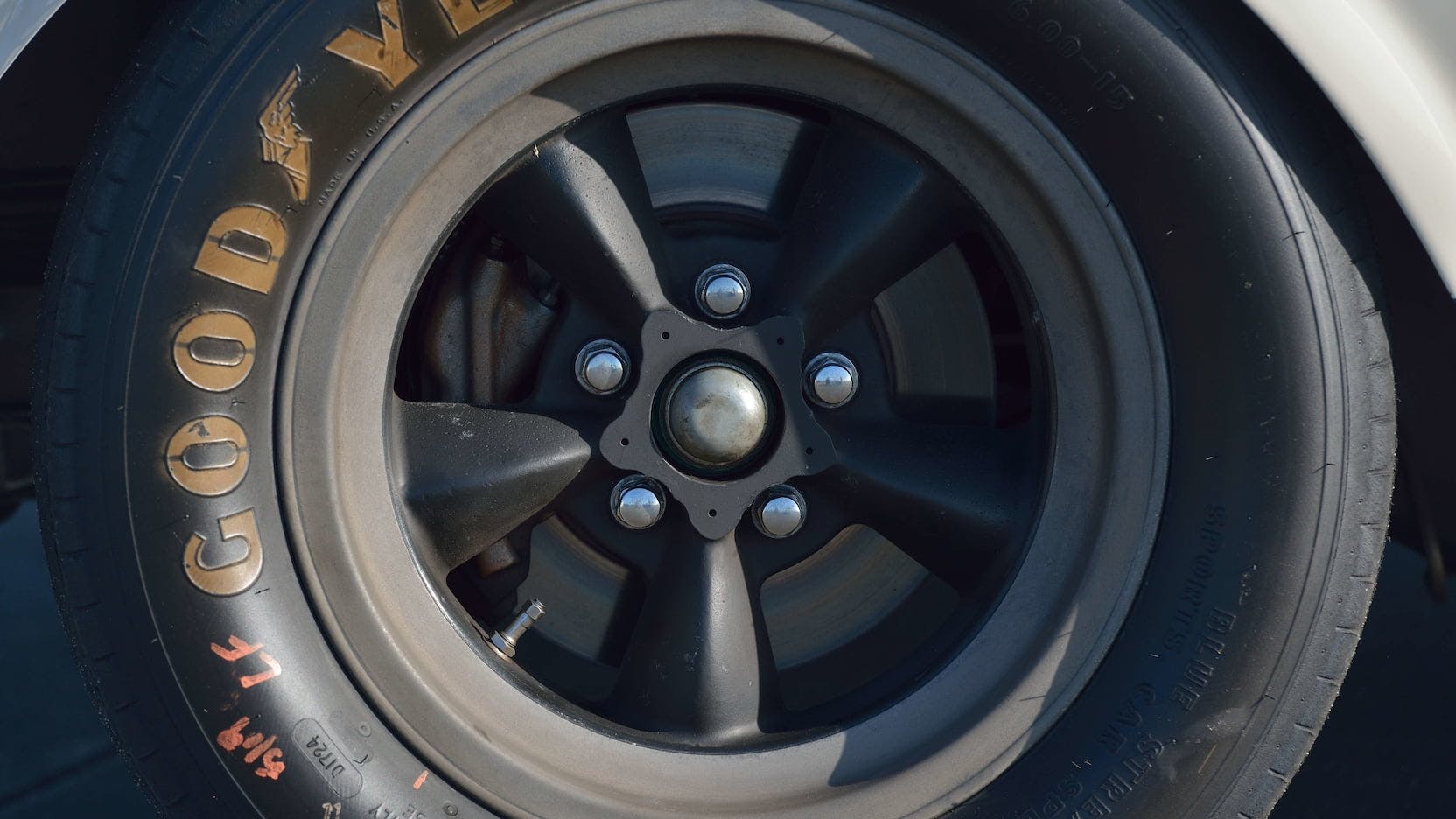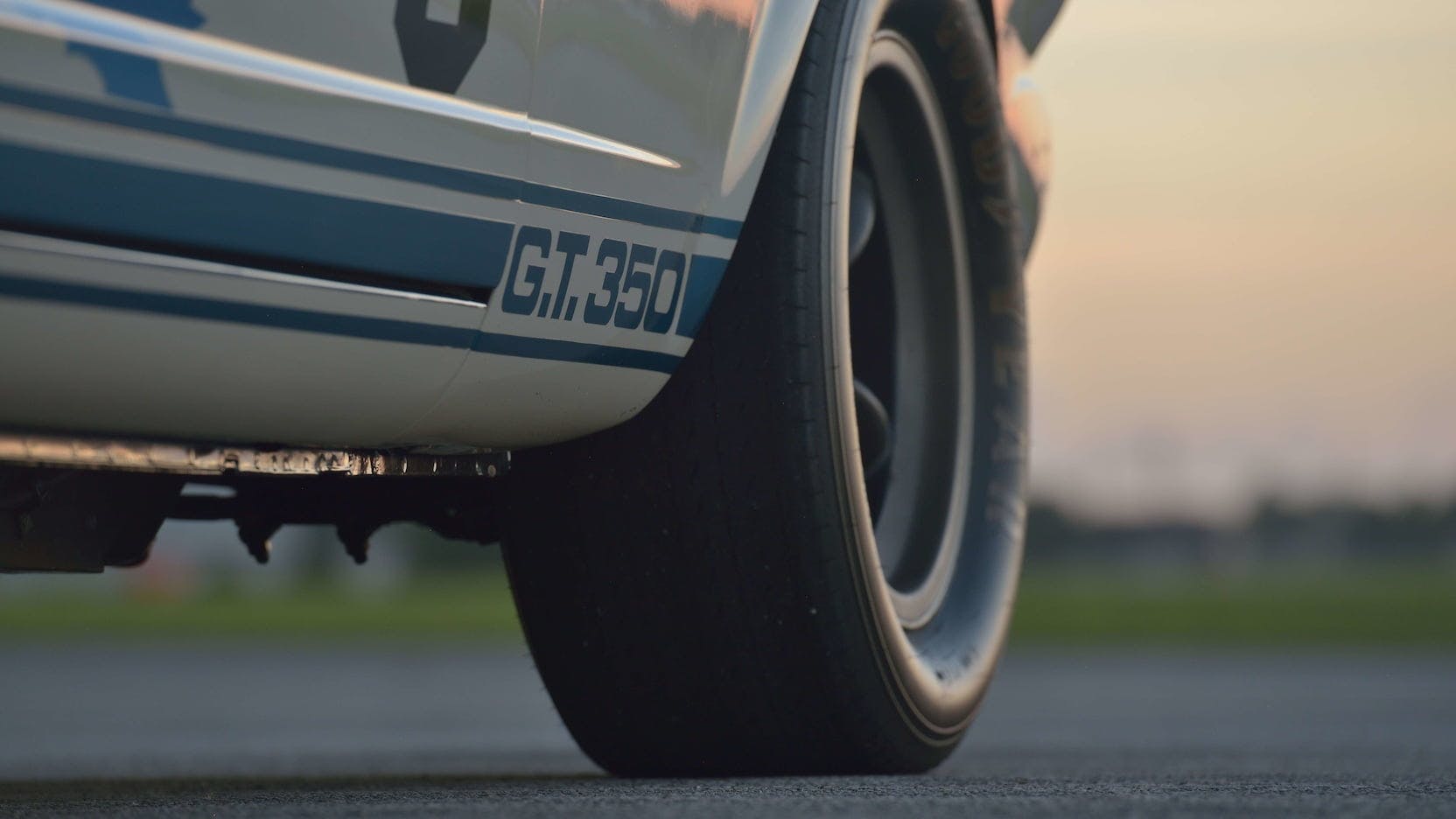Media | Articles
1965 Shelby GT350R: An old friend heads to market (again)
Mecum is offering a 1965 Shelby GT350R, SFM5R106 to be exact, at its Kissimmee sale this week. I’ll be watching very closely. Not because it’s the rarest or most important of the 36 original Shelby GT350 Competition Models (a.k.a. “R Models”)—Mecum already sold one of two GT350R prototypes for $3.85M last July in Indianapolis—nor because it has a particularly impressive competition record. Rather, it was purchased new by Dick Jordan, a privateer from Downers Grove, Illinois, and raced at all of the tracks in the area for a little under ten years before it ended up in storage and faded away.
No, I’ll be watching this car because, not long ago, it was mine.

Of course, any Shelby GT350 Competition Model is objectively worthy of attention. With relatively simple modifications, Shelby’s skilled team (headed by “Mr. GT350” Chuck Cantwell) made the Mustang nearly unbeatable in B-Production competition and created a formula that vintage racers still copy today.
That formula included basic weight cutting—eliminating bumpers, Plexiglas windows, fiberglass front apron and hood, and gutting the interior. It also featured a 289 “K Code” engine, which Shelby had been using for three years in Cobra competition cars.
To list all of the races won by GT350 R Models would probably require adding another server for this site. It will have to suffice to say that I do not believe there has been another production-based car built in such small numbers to have won so many races. In 1965, GT350 R Models won five out of six regional SCCA championships. At the 1965 ARRC National race, 10 out of the 14 B-Production cars entered were R Models. By the end of the race, Jerry Titus had won the 1965 B-Production National Championship in 5R001.
Marketplace
Buy and sell classics with confidence
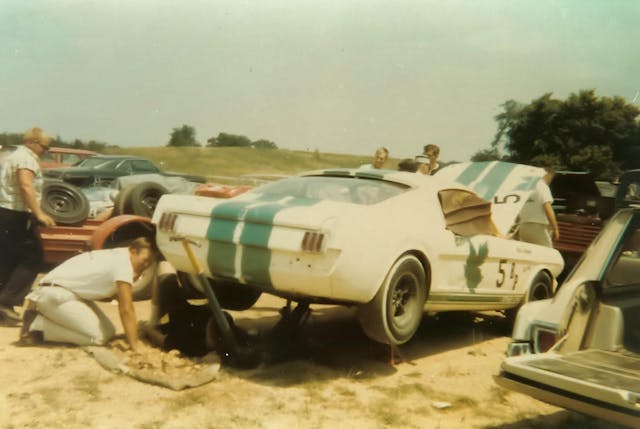
I grew up reading about the exploits of these most excellent underdog racing Mustangs after they had become the stuff of legend, and I dreamed of being able to experience one someday.
Dreaming remains inexpensive, as is studying history. The same can’t be said of the GT350Rs. Only 36 were built, in three batches. That includes two prototypes/ factory team cars, 5R001 and 5R002 (the latter of which Mecum sold at Indy in July 2020) and 34 production models built for customers. The production versions were priced at $5995, about $1500 more than a street-version GT350.
The initial batch of 15 customer R Models started with SFM5R094, delivered on 4/10/1965 to Tom Yeager of Marion, Ohio. The last first-batch car, SFM5R108, was delivered on 9/22/1965 to Gene Hammond Ford in Texas and sold to its first owner Bill Steele.
After the first batch was completed, the second batch of R Models was produced. The chassis numbers for these cars went from 5R209-5R213, for a total of five cars.
The third and final batch of R Models consisted of 14 cars, all but one being delivered post-January, 1966. As they were built so late in the 1965 model year, the third-batch cars actually had 1966 GT350 grilles and tape rocker panel stripes. R Model buyers were drying up by this point, as $6000 would get you any number of new race cars. For evidence of this, look no further than the last R Model to be sold from Shelby American, 5R533, shipped on March 31st, 1967–a nearly two-year-old “new” race car!
Many old race cars of the period were scrapped or simply forgotten the moment they fell out of contention, yet collectors recognized the significance of the R Models very early and have long paid considerable sums for them. Which makes sense. Although GT350Rs look like pony cars, they are, in fact, one of the greatest champions from one of the greatest eras in racing. They have more in common with famous prewar Grand Prix cars than a standard Mustang or a typical “obsolete” race car. Not to mention, they will always be at the very top of the Shelby food chain.
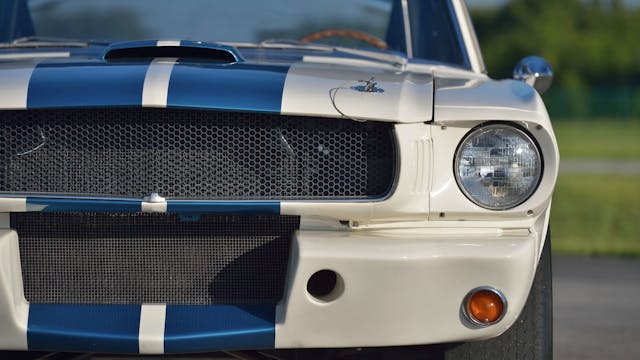
Just as the cars became moderately competitive “old race cars” in the early 1970s, people realized they were special and started collecting them. Today, 30 of the 36 original R Models are accounted for (although some are regarded as questionable in their authenticity per the Shelby American Automobile Club), a staggering amount considering these war horses were built for, well, war.

Which brings me back to my story of how the car that is being offered at Mecum Kissimmee this week—SFM5R106 a.k.a. the Dick Jordan/Jack Loftus Ford car—at one point ended up in my garage. In the early 2000s I had finally gotten serious about getting my hooks into some significant Shelbys, and an R Model was obviously at the top of the list.
Back then there was no such thing as Bring a Trailer, and few important cars had to that point sold online. So, imagine my surprise in 2004, when I saw R106 pop up for auction on eBay of all places. The bidding was in the low-100K range, not that much more than a good ’65 GT350 street model was trading for at the time. I hurriedly looked the car up in the SAAC Registry, contacted the seller, rubbed my eyes, shook my head, and determined that yes, there was a legitimate GT350R being sold on eBay.
I placed a few bids and then it seemed the secret got out. When the bidding surpassed the limits of my home equity LOC I did what any smart guy would do—I called a friend with a lot more money who also wanted to own an R Model. He gave me the green light to call the owner back and try to buy it outright and end the auction. That worked. The car was “ours” and off it went to my friend’s garage. Where it sat for 2 years. Untouched. Finally, I couldn’t stand it anymore and convinced him to sell it to me.
As I noted, R106 doesn’t have the most impressive racing record. But it was significant to me, as a Midwesterner, that it had campaigned locally. It seemed like it was my job to bring it “home” and make it look like it did at its first race in 1965. This involved hunting down a lot of its original parts, which a previous owner sold off for some reason. I was able to do that and reunite it with, among other things, its original magnesium wheels and Plexiglas side windows. Using vintage photographs, I was also able to recreate Dick’s original maple leaf and sponsorship decals as they were in 1965–1967.

During this time I also was able to drag home its sibling, R107, which has an incredible European race history, and also R533, which has an impressive history campaigning in Canada. I restored both of those to their 1965–1966 configurations as well, and loved to look at the three warriors in a row and imagine what kind of conversation they would have if cars could pop open a few beers (or cans of Castrol 20w50?) and shoot the breeze.
But the gathering couldn’t last. R Models were becoming too valuable for a Midwestern kid to risk racing and, make no mistake, they are awful road cars. So, I sent them on their way, one at a time. R106 was the last to go, in 2011, after five years in my possession.


I’ve always kept tabs on it. I still take a lot of pride in having erased the years to make her look like it’s 1965 again. The last time I saw R106 in person, its current owner was giving it some exercise at a track day in Illinois—literally a stone’s throw from where Dick Jordan lived in 1965.
Mecum estimates R106 will sell between $1.2–$1.5M this week. The Hagerty Price Guide pegs a #1 example at $1.05M, but as we saw with 5R002 price guides are just that—guides. And R106 is a great and very correct example of a model for which demand has always outstripped supply.
I’ll be keeping an eye on its sale because it is a Shelby—and an R Model at that—and also because it’s one of the first high-profile tests of the high end of the collector car market in 2021. But more important, I’m curious to see where my old friend is headed next.
This story originally appeared on Hagerty Insider, where you can find more deep-dive valuation stories about the collector car market.


